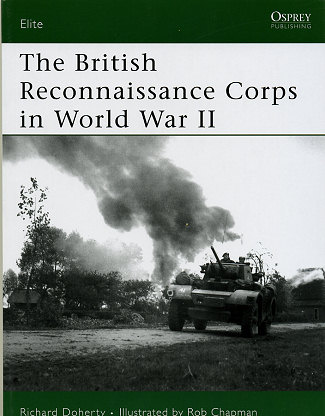 It may seem a bit odd to
most of us, but, at least in the British Army, there was no dedicate ground
recce group, each individual corps having to do what it felt was the best in
this regard. It wasn't until 1941 that a Recce Corps was even established on
paper and it was near the end of the year before any of these units deployed to
North Africa for their first taste of combat.
It may seem a bit odd to
most of us, but, at least in the British Army, there was no dedicate ground
recce group, each individual corps having to do what it felt was the best in
this regard. It wasn't until 1941 that a Recce Corps was even established on
paper and it was near the end of the year before any of these units deployed to
North Africa for their first taste of combat.
One of the problems was the need for adequate equipment. Most
armored cars of the time were basically civilian vehicles on which a
considerable weight of armor plating was attached. This not only made for an
ungainly looking vehicle, but stressed the chassis and components considerably.
There also needed to be developed some combat tactics on how best to utilize
these new units within the framework of the Army. Ultimately, these units were
the spearhead of an advancing army, tasked with discovering how strong the enemy
was, being able to get out of any sticky situations and relay the information
found back to headquarters where it could be incorporated into battle plans.
This meant that they needed to be supplied with vehicles that
could move quickly and yet were able to defend themselves and not be destroyed
in the process of fulfilling their job. Through trial and error, viable vehicles
were eventually supplied and the rest, as they say, is history.
Author Richard Doherty takes us through the development and
deployment of these units through all the combat they saw during WWII. Most of
it was in the Mediterranean and European theaters with only some use in the Far
East during the Burma campaign. As with all of the books in the Elite series,
this is as much about the uniforms and equipment used by these units as it is
about the battles in which they fought. Thanks to a superb choice of images,
most of which are shown here for the first time, and the excellent illustrations
of Rob Chapman, we get a look at these men and how they appeared during their
long years of war.
It is another fascinating Osprey title about a little-known
portion of WWII and one that you will enjoy reading as much as did I.
March 2007
For more on the complete line of Osprey books,
visit www.ospreypublishing.com. In the US, it is
Osprey Direct at 44-02 23rd St, Suite 219, Long Island City, NY 11101., where you can
get a catalogue of available books.
If you would like your product reviewed fairly and quickly by a
site that has over 350,000 visitors a month, please contact
me or see other details in the Note to
Contributors.
 It may seem a bit odd to
most of us, but, at least in the British Army, there was no dedicate ground
recce group, each individual corps having to do what it felt was the best in
this regard. It wasn't until 1941 that a Recce Corps was even established on
paper and it was near the end of the year before any of these units deployed to
North Africa for their first taste of combat.
It may seem a bit odd to
most of us, but, at least in the British Army, there was no dedicate ground
recce group, each individual corps having to do what it felt was the best in
this regard. It wasn't until 1941 that a Recce Corps was even established on
paper and it was near the end of the year before any of these units deployed to
North Africa for their first taste of combat.